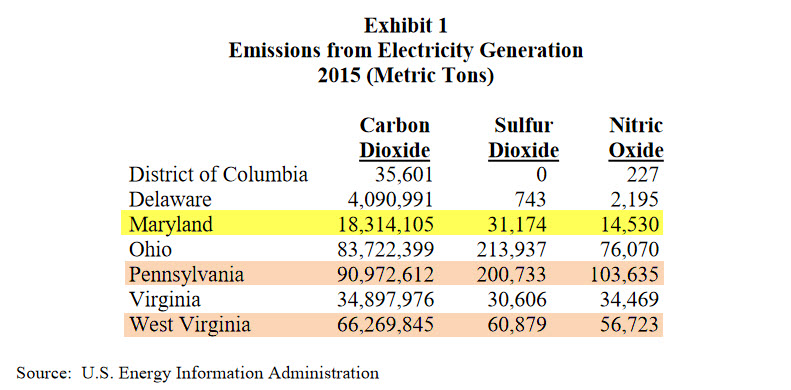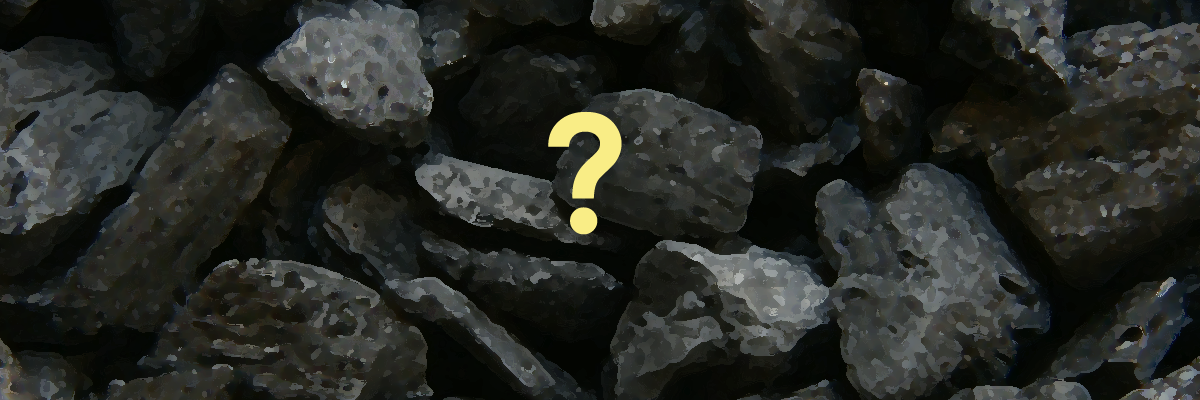by Susan Buchan
Maryland House Bill 1282 was a long shot. It would have provided the basis for Maryland’s PUC to address one of the most under-reported and elusive issues facing states concerned about climate: emissions from dirty, imported energy. The bill sought to “require the Public Service Commission to study and make recommendations about establishing a program to address carbon pollution attributed to electricity generated out-of-state but consumed within the State.”
One of the largest net electricity importers in the U.S. (44% of its 2012 electricity was imported)1, Maryland is surrounded by dirty energy. Its neighboring states export electricity substantially generated by coal combustion. And Maryland’s in-state generation comprises 46.5% coal—the largest percentage of any RGGI state.

So, HB 1282 had a short life. Introduced on 2/10 by State Representative Mary Ann Lisanti, it was withdrawn on 3/9 due to “Unfavorable Report by Economic Matters.” (Lisanti is listed as a member of the Economic Matters Committee.) Its only stated cost to be incurred was $35,000, in 2018. The bill’s failure may have been easily predicted in the current political atmosphere, where actions requiring expenditures for new state programs are often nixed; however, its underlying rationale provides meaningful insight into emission reductions.
RGGI and Leakage
Maryland is one of nine Northeast states participating in the Regional Greenhouse Gas Initiative (RGGI). The regional cap and trade program limits CO2 emissions from electric power plants, issues CO2 allowances, and establishes participation in regional CO2 allowance auctions.
Greenhouse gas accounting programs use the term leakage to describe the phenomenon through which efforts to reduce emissions in one place shift emissions to another location or sector where they remain uncontrolled or uncounted. Ideally, leakage would be accounted for by the state using that energy.
Maryland Not Alone
A study of Maryland’s imported electricity, launched by HB 1282, would likely have revealed carbon emissions and leakage not fully counted under the state’s RGGI allowances and goals. Maryland is not alone in its predicament. Fully 82% of states are net importers of electricity1, and electrons are difficult to track. Likewise, carbon emissions do not respect geographic boundaries.
States with clean energy policies and forward-looking strategies that still import coal-generated electricity may be meeting their own regulations while pollutants persist unabated with their neighbors next door.
Energy Efficiency Solution
While we applaud Delegate Isanti’s attempt to launch an examination of Maryland’s true carbon footprint, any legislation of this nature may be unpopular or ignored in 2017. Fortunately, Maryland can share better news on another avenue to reduce emissions: energy efficiency. Energy efficiency is an easy way to reduce the need for states to import electricity. And with the recent news about EmPOWER,2 all states in the region and beyond may have something to be grateful for!
–Susan Buchan is E4TheFuture’s Director of State Policy
1U.S Energy Information Administration 2016 Data, https://www.eia.gov/electricity/data.cfm
2EmPOWERing Maryland: Estimating the Economic Impacts of Energy Efficiency Investments on Maryland’s Economy, ACEEE, 3/6/17
